The NVIDIA GeForce GTX 980 Ti Review
by Ryan Smith on May 31, 2015 6:00 PM ESTMeet The GeForce GTX 980 Ti
Like the rest of NVIDIA’s high-end cards in this generation, the reference GeForce GTX 980 Ti is launching with NVIDIA’s standard metal cooler. This design has served NVIDIA well since the launch of the GTX Titan in 2013 and continues to be the blower design to beat the high end, easily handling the 250W TDP of NVIDIA’s high-end cards without generating a ton of noise in the process.
As with so many other aspects of the GTX 980 Ti, the GTX 980 Ti’s cooler and build is a near-copy of the GTX Titan X. The only difference in the cooler is the paint job; GTX Titan X got a unique black paint job, while GTX 980 Ti gets the more standard bare aluminum finish with black lettering and a black-tinted polycarbonate window.
Otherwise there’s very little to be said about the GTX 980 Ti’s design that hasn’t been said before, so we’ll just recap what we said about the cooler design from our review of the GTX Titan X.
For GTX 980 Ti, NVIDIA has opted to leave well enough alone, having made virtually no changes to the shroud or cooling apparatus. And truth be told it’s hard to fault NVIDIA right now, as this design remains the gold (well, aluminum) standard for a blower. Looks aside, after years of blowers that rattled, or were too loud, or didn’t cool discrete components very well, NVIDIA is sitting on a very solid design that I’m not really sure how anyone would top (but I’d love to see them try).
In any case, our favorite metal shroud is back once again. Composed of a cast aluminum housing and held together using a combination of rivets and screws, it’s as physically solid a shroud as we’ve ever seen. The card measures 10.5” long overall, which at this point is NVIDIA’s standard size for high-end GTX cards.
Drilling down we have the card’s primary cooling apparatus, composed of a nickel-tipped wedge-shaped heatsink and ringed radial fan. The heatsink itself is attached to the GPU via a copper vapor chamber, something that has been exclusive to NVIDIA’s 250W cards and provides the best possible heat transfer between the GPU and heatsink. Meanwhile the rest of the card is covered with a black aluminum baseplate, providing basic heatsink functionality for the VRMs and other components while also protecting them.
Finally at the bottom of the stack we have the card itself, complete with the GM200 GPU, VRAM chips, and various discrete components. The GM200 PCB places the GPU and VRAM chips towards the front of the card, while the VRMs and other discrete components occupy the back. As with the GTX Titan X, GTX 980 Ti features NVIDIA’s reworked component placement to improve airflow to the discrete components and reduce temperatures, along with employing molded inductors.
NVIDIA once again employs a 6+2 phase VRM design, with 6 phases for the GPU and another 2 for the VRAM. This means that GTX 980 Ti has a bit of power delivery headroom – NVIDIA allows the power limit to be increased by 10% to 275W – but hardcore overclockers will find that there isn’t an extreme amount of additional headroom to play with. Based on our sample the actual shipping voltage at the max boost clock is a bit higher than GTX Titan X, coming in at 1.187v, so in non-TDP constrained scenarios there is some additional headroom through overvolting, up to 1.23v in the case of our sample.
In terms of overall design, unlike GTX Titan X and its 24 VRAM chips, for the GTX 980 Ti NVIDIA only needs to use 12 VRAM chips to get the card’s 6GB of VRAM, so all of the VRAM is located at the front of the card. Halving the RAM capacity simplifies the card a bit – there are now no critical components on the back – and it brings down the total VRAM power consumption slightly. However despite this, NVIDIA has not brought back the backplate from the GTX 980, having removed it on the GTX Titan X due to the VRAM chips it placed on the rear.
Moving on, in accordance with GTX 980 Ti’s 250W TDP and the reuse of the metal cooler, power delivery for the GTX 980 Ti is identical to its predecessors. This means a 6-pin and an 8-pin power connector at the top of the card, to provide up to 225W, with the final 75W coming from the PCIe slot.
Meanwhile display I/O follows the same configuration we’ve seen on the rest of the high-end GTX 900 series. This is 1x DL-DVI-I, 3x DisplayPort 1.2, and 1x HDMI 2.0, with a total limit of 4 displays. In the case of GTX 980 Ti the DVI port is somewhat antiquated at this point – the card is generally overpowered for the relatively low maximum resolutions of DL-DVI – but on the other hand the HDMI 2.0 port is actually going to be of some value here since it means GTX 980 Ti can drive a 4K TV. Meanwhile if you have money to spare and need to drive more than a single 4K display, GTX 980 Ti also features a pair of SLI connectors for even more power.
Finally, taking a look at the long term, I wanted to quickly hit upon the subject of the VRAM capacity difference between the GTX 980 Ti and the GTX Titan X. Essentially NVIDIA’s only remaining selling point for the GTX Titan X, the Titan will remain their only 12GB card for some time to come. For NVIDIA this means that they can pitch the GTX Titan X as a more future-proof card than the GTX 980 Ti, as it would be hard-pressed to run out of VRAM.
The question for the moment then is whether 12GB is worth a higher premium, let alone the GTX Titan X’s $350 premium. The original GTX Titan by comparison was fortunate enough to come out with 6GB right before the current-generation consoles launched, and with them their 8GB memory configurations. This lead to a rather sudden jump in VRAM requirements in games that the GTX Titan was well positioned to handle, whereas GTX 780 Ti and its 3GB of VRAM can struggle in the very latest games at 4K resolutions. Much like 6GB in 2013, 12GB is overkill in 2015, all the while 6GB is a more practical amount for a 384-bit card at this time.
But to answer the question at hand, unlike the original GTX Titan, I suspect 12GB will remain overkill for a much longer period of time, especially without a significant technology bump like the consoles to drive up VRAM requirements. And consequently I don’t expect GTX 980 Ti to have any real issues with VRAM capacity in games over the next couple of years, making it better off than the GTX 780 Ti, relatively speaking.


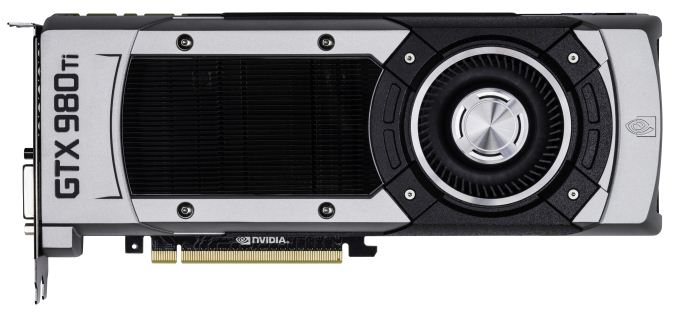
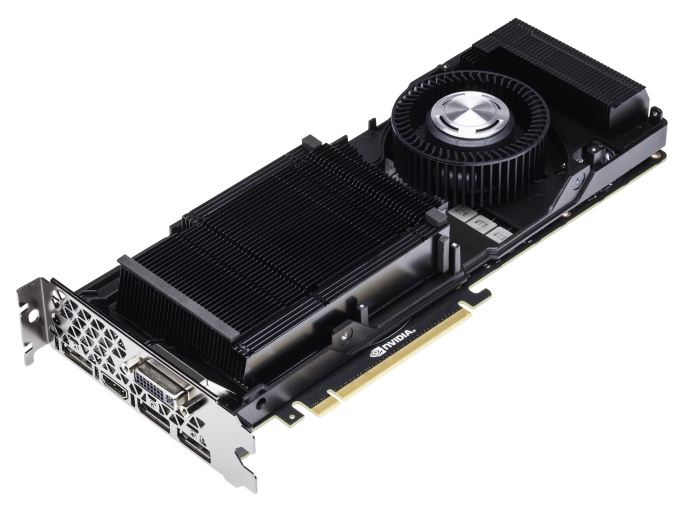
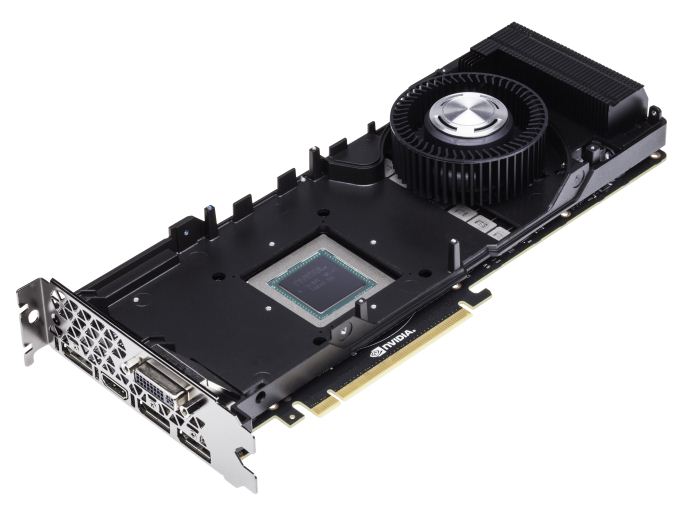
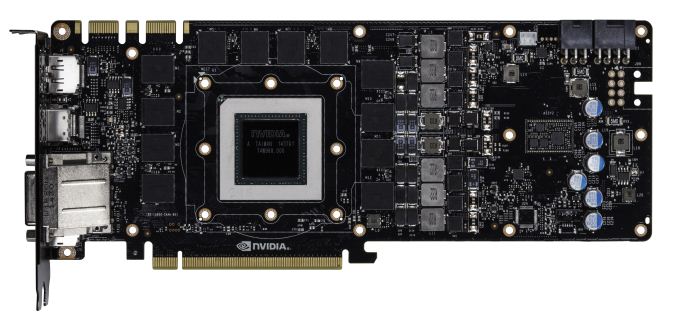

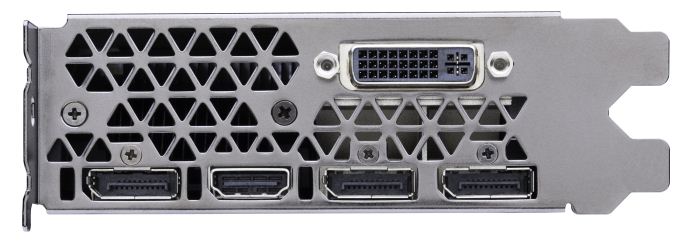








290 Comments
View All Comments
FlushedBubblyJock - Wednesday, June 10, 2015 - link
Thumbs up daroller, 1920x1200 and only 980TI is capable of driving it properly without eye candy loss and fps failures.People claim I'm crazy but then I never have to worry about my settings and I can seamlessly choose and change and view and analyze and I'm never frustrated "having to turn down the settings" to make things playable.
The rest of the world stretches livability to the limit and loves stressing everything to the max an grinding it all down to pathetic perf, all the while claiming "it's awesome !"
In other words, stupidity is absolutely rampant.
Yojimbo - Monday, June 1, 2015 - link
Value is not performance per price. Value is what benefit is achieved by the purchase of the product. I'll repeat my previous post by asking how can you assume that purchasing a card has "unreasonable value"? If I, as someone who is in the market for a video card, have a range of options to choose from for myself, how can you off-the-cuff judge how much I should be willing to spend to get a better experience (higher resolution, more detailed graphics, smoother game play, etc) from a higher-priced offering compared with a lower-priced offering? You have no idea what my value of those experiences are, so how can you judge whether the cards offer good value or not?The people buying those high priced cards are buying them because in their minds they are getting more value from them at the higher price than they would be getting from the lower-priced alternatives. Now people don't always make the most accurate decisions. They can be fooled, or they can have misconceived notions of what they are going to be getting, but the point is that they THINK they are getting more value at the time of purchase.
mapesdhs - Wednesday, June 3, 2015 - link
Or they can simply afford it and want the *best* for other reasons such as being able to max out visuals without ever worrying about VRAM issues. It's wrong to assume such purchases are down to incorrect value judgements. You're imposing your own value perception on someone else.chizow - Sunday, May 31, 2015 - link
Yeah, unfortunately anyone who actually buys high-end GPUs understands price and performance goes out the window the higher you go up the product chain. Nvidia made their value play to the masses with the 970 at an amazing $330 price point, memory snafu notwithstanding, and the card has sold incredibly well.There was no reason for them to drop prices further, and I think most observers will recognize the $650 price point of the 980Ti is actually very aggressive, given there was absolutely no pressure from AMD to price it that low.
Kjella - Sunday, May 31, 2015 - link
If AMD gets to launch first and nVidia must respond, it seems like they're trading blows. If nVidia makes a preemptive strike now, they make AMD's launch seem late and weak. They know AMD is betting on Win10 driving sales, so they could read their launch plan like an open book and torpedo it out of the gate. I think this will be a miserable month for AMD, it's hard to see how GCN-based cards are going to compete with Maxwell, HBM or not.chizow - Sunday, May 31, 2015 - link
Yep, Nvidia just pre-emptively torpedoed AMD's product launch and set pricing again. All very impressive how Nvidia has gone about 28nm product launches despite the uncertainty we'd see anything new until 14/16nm after word 20nm was cancelled.PEJUman - Monday, June 1, 2015 - link
I don't think Nvidia is dumb enough to launch 980TI without knowing where FIJI would lay on their stack. I think this is more of a powerplay from them saying, 'here's your price point AMD, good luck'like you said, the fact is they have no competitive pressure on titan X, why ruin it's pricing now if you don't know where FIJI would land.
here's my guess:
Nvidia just torpedoed their titan X, mainly because FIJI probably around 97% of titan X, and AMD was about to ask 850~1000 USD for it. now Nvidia will launch this 980TI at 650 to control the price. (which I bet they have been readying for quite some time, simply waiting for the right time/price point)
Peichen - Monday, June 1, 2015 - link
I think you are right. Fuji was estimated to be close to Titan but cheaper by $200. Now Nvidia delivered a Fuji-like card for $650, Fuji cannot go above $650. In fact, consider Fuji to be limited to 4GB and hot enough to have a watercooled version, Fuji might have to go below $600 with bundle game or $550 without bundle to make any sense. With the big chip and expensive memory Fuji is using, AMD/ATI's margin on those card are going to be slim compares with Nvidia.PEJUman - Monday, June 1, 2015 - link
yeah... time to buy AMD stock options :)In all honestly though, I really would like to have them around, if only for the 2 horses race...
bloodypulp - Monday, June 1, 2015 - link
For christsake... it's Fiji. NOT Fuji.